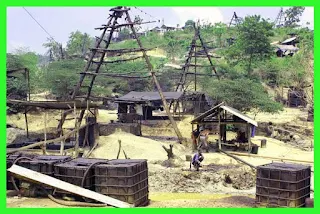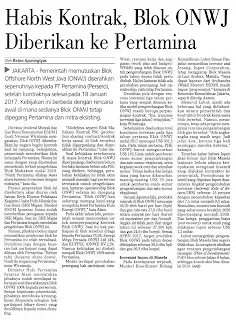Organisasi negara-negara pengekspor minyak atau Organization of the Petroleum Exporting Countries (OPEC) berencana menggunting produksi minyak sebanyak 4% hingga 4,5%. Pemangkasan ini berlaku untuk seluruh anggota, kecuali Nigeria dan Libya. Tiga orang sumber di OPEC menyatakan kepada Reuters, bahwa hasil pertemuan di Vienna merekomendasikan pemangkasan tersebut. Usulan itu, seperti diberitakan Reuters, Rabu (23/11), akan dibicarakan pada pertemuan tingkat menteri OPEC pada 30 November mendatang.
Pemangkasan ini akan berdampak pada pengurangan produksi OPEC sebesar 1,2 juta barel per hari. Angka tersebut merupakan hitungan Reuters berdasarkan produksi pada Oktober 2016. Seorang sumber juga mengatakan bahwa delegasi dari Iran, lrak dan Indonesia telah menyatakan keberatan atas rencana tersebut. Pada September 2016 lalu, negara-negara OPEC sebenarnya telah sepakat memangkas produksi minyak menjadi 32,5 juta hingga 33 juta barel per hari. Saat ini, produksi minyak OPEC diperkirakan mencapai 33,64 juta barel per hari.
Namun sepertinya hambatan akan datang dari Iran dan lrak yang tidak setuju atas usul tersebut. Contohnya Iran yang justru ingin meningkatkan produksi karena gangguan ekonomi yang sempat terjadi pasca sanksi embargo. Iran sendiri telah diminta negara-negara OPEC lain untuk memangkas produksi minyaknya sebesar 4,5%. Saat ini, produksi harian minyak Iran mencapai 4 juta barel. Sementara Irak, telah mendapat rekomendasi banyak pihak agar bisa memangkas produksi sebanyak 200.000 barel per hari.
Sebanyak 85% sumber pemangkasan produksi berasal dari negara teluk. Namun sampai saat ini pihak Iran belum menyepakatinya, kata seorang sumber Reuters. Arab Saudi dan Negara Teluk lain mengaku siap memangkas produksi hingga berjumlah total 1 juta barel per hari. Ketiadaan dukungan dari Irak dan Iran, menurut sumber tersebut, akan membuat rumit upaya OPEC menyeimbangkan jumlah pasokan dan permintaan. Ujung-ujungnya, harga minyak pun sulit di angkat naik ke harga normal.
Sebelumnya Menteri Energi Aljazair, Noureddine Boutarfa menyatakan keyakinannya terhadap kesuksesan rencana pemangkasan produksi minyak OPEC tersebut. Hal tersebut diungkapkan Boutarfa pasca bertemu dengan Menteri Energi Rusia Alexander Novak, yang menegaskan Rusia mempertimbangkan pembekuan produksi minyak. Adapun produksi minyak Rusia per November 2016 diperkirakan mencapai 11,2 juta barel per hari.
IN ENGLISH
Proposes OPEC production decline 4.5%
Organization of Petroleum Exporting countries or the Organization of the Petroleum Exporting Countries (OPEC) plans to cut oil production by 4% to 4.5%. Pruning is applicable to all members, except Nigeria and Libya. Three people at the OPEC source told Reuters that the meeting in Vienna recommend these cuts. The proposal, as reported by Reuters on Wednesday (23/11), will be discussed at the ministerial meeting of OPEC on 30 November.
These cuts will have an impact on OPEC production cuts of 1.2 million barrels per day. The figure is a Reuters count based on production in October 2016. A source also said that a delegation from Iran, Iraqis and Indonesia have expressed objections to the plan. In September 2016 then, OPEC countries have agreed to cut actual oil production to 32.5 million to 33 million barrels per day. Currently, OPEC oil production is estimated to reach 33.64 million barrels per day.
But it seems barriers will come from Iran and Iraqis who do not agree on the proposal. Examples Iran that it wants to increase production due to economic disturbances that had occurred after the embargo. Iran itself has asked other OPEC countries to cut oil production by 4.5%. Currently, the daily production of Iranian oil to reach 4 million barrels. While Iraq, has received a recommendation of many parties in order to cut production by 200,000 barrels per day.
As many as 85% of production cuts come from Gulf countries. But until now the Iranians do not agree, a source told Reuters. Saudi Arabia and other Gulf countries to be ready to cut production by totaling 1 million barrels per day. The absence of support from Iraq and Iran, according to the source, will complicate the efforts of OPEC to balance the amount of supply and demand. In the end, oil prices were difficult to lift up to the normal price.
Previous and Algerian Energy Minister Noureddine Boutarfa express complete confidence in the success of the plan that OPEC oil production cuts. This was revealed Boutarfa after meeting with Russian Energy Minister Alexander Novak, who reiterated Russia was considering freezing oil production. As for Russian oil production per November 2016 is estimated at 11.2 million barrels per day.
Kontan, Page-7, Thursday, Nov,24-2016











